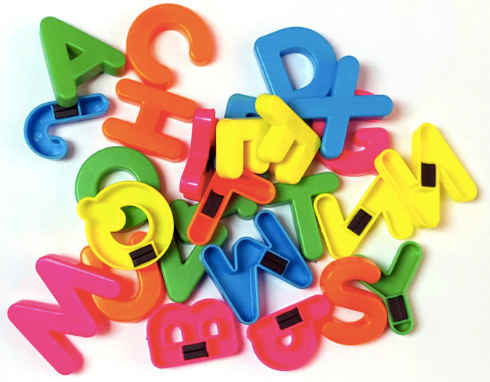A-Z Sentence Summary
What It Is
In this activity, students use alphabet refrigerator magnets to create a Chalkboard Splash review. At the end of a lesson, students choose magnetic letters, attach these to the whiteboard, and write their one-sentence summaries on the board. This activity is a great wrap-up to almost any lesson, enabling students to share and contribute to a larger-scale whole-class summary.
For example, a lesson on Civil War weaponry might have summaries like this for the letters J, V, and Y.
- J = Just in time for the Civil War, weapons were enhanced by great accuracy and distance.
- V = Very fast firing of weapons caused many casualties during the Civil War.
- Y = Young men were drafted into the war and used guns like rifles and the Gatling gun.
How It Works
At the end of a teacher-led content presentation, assign students a letter of the alphabet (or give them a cardboard or magnetic letter).
- Ask students to create a one-sentence summary of the presentation, beginning their sentence with the assigned letter.
- Do a Chalkboard Splash, attaching the sentence and magnetic letter to the board so students can review their peers’ sentence summaries.
- Before ending the lesson, call out the letters sequentially from A to Z to cue students to read their sentences out loud.
Don’t comment on how excellent a response might be, no matter how tempted you are to linger on a response, or you’ll find yourself trying to imitate that same enthusiasm across 26 letters. Instead, simply say, “Thank you,” and then call out the next letter
How to Ensure Higher-Order Thinking
One way to ensure higher-order thinking with this activity is to ask students to add a relevance component to their sentences. For example, students can create a second sentence to their A–Z Sentence Summary by completing the sentence starter “This is important because . . .” or “This affects us today because . . . .” This relevance piece can be added to a sentence summary in any content area. If students are learning about different kinds of soil, for example, it’s also important that they know why that information is worth knowing. What are the implications of various soils for the different vegetation, wildlife, or even building materials in the area in which they live?

Source
Himmele P., and Himmele, W. Total Participation Techniques: Making Every Student an Active Learner. ASCD, 2017, pp.118-120.
